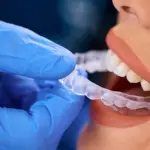
Pediatric Dentist 101: What Every Parent Should Know
December 17, 2024
Invisalign vs Braces: Why Invisalign Wins for Many Patients
February 19, 2025Dental emergencies can be terrifying, but knowing when to call an emergency dentist can help you avoid long-term damage and get relief fast. Understanding what qualifies as a dental emergency can make all the difference. Let’s explore some common dental emergencies and when to seek immediate care from a real dental professional.
What is a Dental Emergency?
In simple terms, a dental emergency is any situation where you need immediate care to avoid serious damage, infection, or permanent tooth loss. These emergencies can vary from intense pain to physical damage that affects your ability to eat and drink. If left untreated, dental problems can worsen, leading to more complicated and expensive treatments.
Common Dental Emergencies and When to Seek Help
Here are a few dental situations where you should call an emergency dentist right away.
Severe Toothache
A toothache is never fun, but when the pain is sharp, constant, or worsens over time, it’s time to call an emergency dentist. This could indicate an infection or abscess, and delaying treatment could lead to even more severe complications. If the pain is intense and makes it difficult to eat or drink, you shouldn’t wait. Get in touch with your dentist or dental emergency line as soon as possible.
If you’re experiencing pain, discomfort and difficulty with normal activities, don’t try to ride it out. The longer you wait, the more likely it is that the infection will spread, possibly causing swelling, fever, and even loss of the tooth. Painkillers may temporarily ease the pain, but they won’t address the underlying issue. Contact your emergency dentist right away for proper treatment.
Chipped or Broken Teeth
A chipped or broken tooth might not always seem like an urgent problem, but it can be much worse than it appears. A crack can expose the sensitive inner parts of the tooth, causing pain and potentially causing an infection. Even if you aren’t feeling immediate pain, it’s best to have it looked at by a dental professional as soon as possible.
If the break is severe or the tooth is sharp, it can also injure the inside of your mouth or gums, causing bleeding. A cold cloth on the jaw can help ease discomfort until you get to your emergency dentist. If you’re experiencing a broken tooth, try to keep any pieces you find in a baggie in the fridge until you can make it to the dentist. They might be able to reattach it if you act quickly.
Knocked-Out Tooth
If you’ve ever experienced accidentally losing a tooth, you know how alarming it can be. Whether because of an accident, sports injury, or an unexpected fall, a knocked-out tooth is a clear dental emergency. The quicker you act, the better the chances the tooth can be saved. If you’re able to locate the tooth, pick it up by the crown (not the root) and rinse it gently under cold water. Place the tooth back in the tooth socket. If this is not possible, place the tooth in a baggie of milk and go to an emergency dentist immediately.
Don’t waste time waiting for the pain to subside or hoping the tooth will heal on its own. Rush to the hospital or dental emergency line to ensure a dental professional can assess the damage and try to reimplant the tooth. If it’s not possible to save the tooth, your dentist will discuss alternative solutions like implants or bridges.
Lost Fillings or Crowns
If a filling or crown falls out, it can leave your tooth vulnerable to further damage, infection, or discomfort. You might experience pain or sensitivity when eating or drinking, and the exposed area may cause irritation to your gums. While you don’t need to rush to the hospital, it’s still a good idea to contact your emergency dentist, as they may be able to provide a temporary solution until they can permanently replace the filling or crown.
You can use over-the-counter dental cement temporarily, but this should not replace a visit to your dentist. The key is to book the soonest available appointment and avoid eating sticky or hard foods that could make the problem worse.

When to Seek Help vs. When to Wait
So, how do you know when to rush to the dentist and when to wait? Generally, if you’re experiencing severe pain, swelling, bleeding, or have lost a tooth, it’s time to call an emergency dentist. On the other hand, if the issue is relatively minor, like slight tooth sensitivity or a small chip that doesn’t hurt, you may not need immediate care but should still follow up with your regular dentist soon.
If you’re unsure, you can always contact an emergency dentist line. When you call, you’ll speak with a professional who can guide you through the next steps and help determine if you need to come in right away.
Get the Care You Need When You Need It
Dental emergencies can happen at any time, but knowing what qualifies as an emergency and when to seek help can make all the difference in keeping your smile intact. Don’t hesitate to call your emergency dentist if you are experiencing severe pain, a knocked-out tooth, or any other urgent issue. Acting quickly is critical to preventing further damage and getting back to your normal routine.
If you think you’re facing a dental emergency, remember to contact us!
